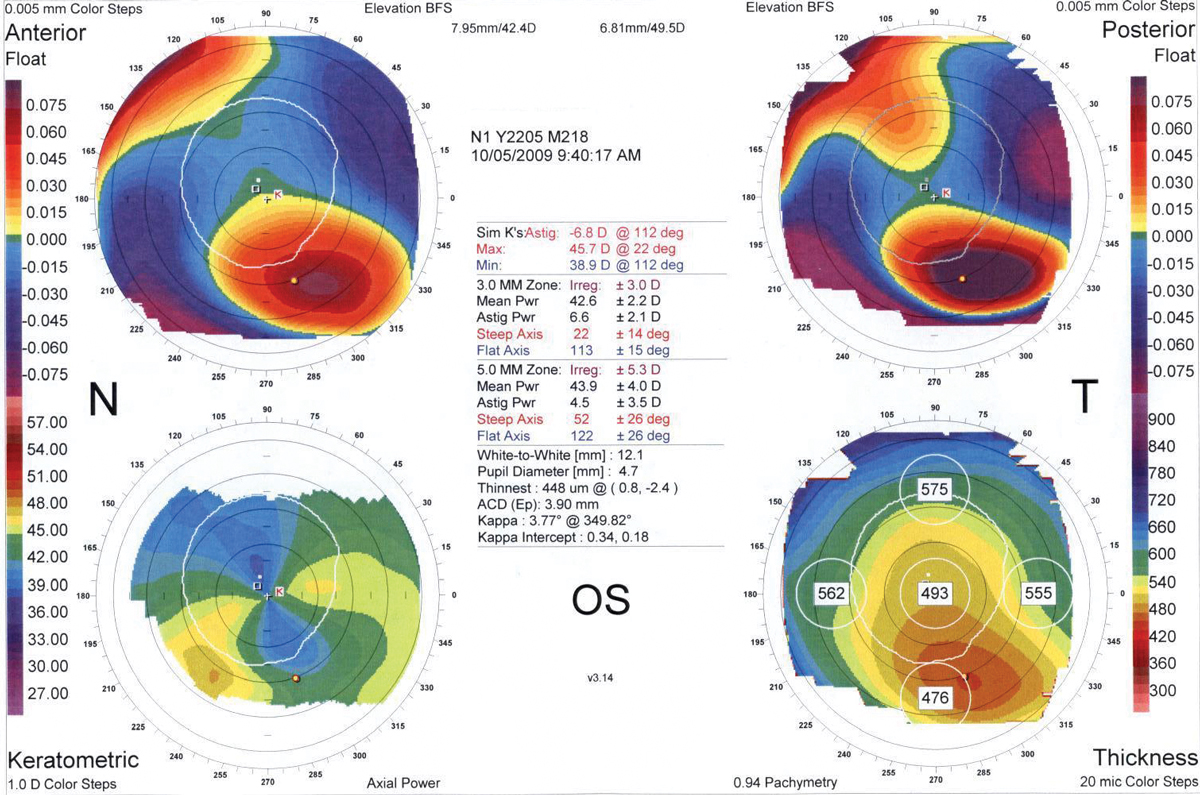 |
| This study found that unilateral CXL may be an effective way to improve vision in the worst of two eyes with keratoconus. Photo: Mitch Ibach, OD. Click image to enlarge. |
Keratoconus is a bilateral disease, but the disease often manifests asymmetrically between the two eyes of the same patient. Researchers recently evaluated a unilateral corneal crosslinking (CXL) protocol with conservative fellow-eye follow-up and found that it was an acceptable management strategy in patients with keratoconus.
The study involved 79 fellow eyes of keratoconus subjects who had initially undergone unilateral CXL. Thirty of the fellow eyes received CXL while the other 49 were followed. The researchers reported that those who received CXL in the fellow eye were younger than those who did not. Among the 49 naïve fellow eyes, only about 40% showed evidence of progression, and these eyes had significantly higher baseline K1, K2, Km and Kmax and significantly thinner pachymetry at the pupil, apex and thinnest point. Certain baseline values of these parameters were considered tentative predictors of progression.
“This study shows that a treatment strategy in which the worst of two eyes (if shown to be progressive) is crosslinked, followed by vigilant follow-up of the fellow (naïve) eye, is safe, since not all fellow eyes progress,” said one of the study authors Uri Soiberman, MD, an assistant professor of ophthalmology at Johns Hopkins. “Only if the fellow eye is shown to be progressing does one need to proceed with [bilateral] crosslinking. This approach is better for milder keratoconus patients, where Kmax is lower than 47.9D and the thinnest point per pachymetry is 475µm or thinner.”
Li G, Di Meglio L, Wang J, et al. Crosslinking vs. observation in fellow eyes of keratoconus patients. Hindawi J Ophthalmol. June 1, 2022. [Epub ahead of print]. |

